Hayashi Rice is one of the most popular rice dishes in Japan. It features a rich, tomato-based sauce with just the right amount of acidity, complemented by the flavors of beef and onions.
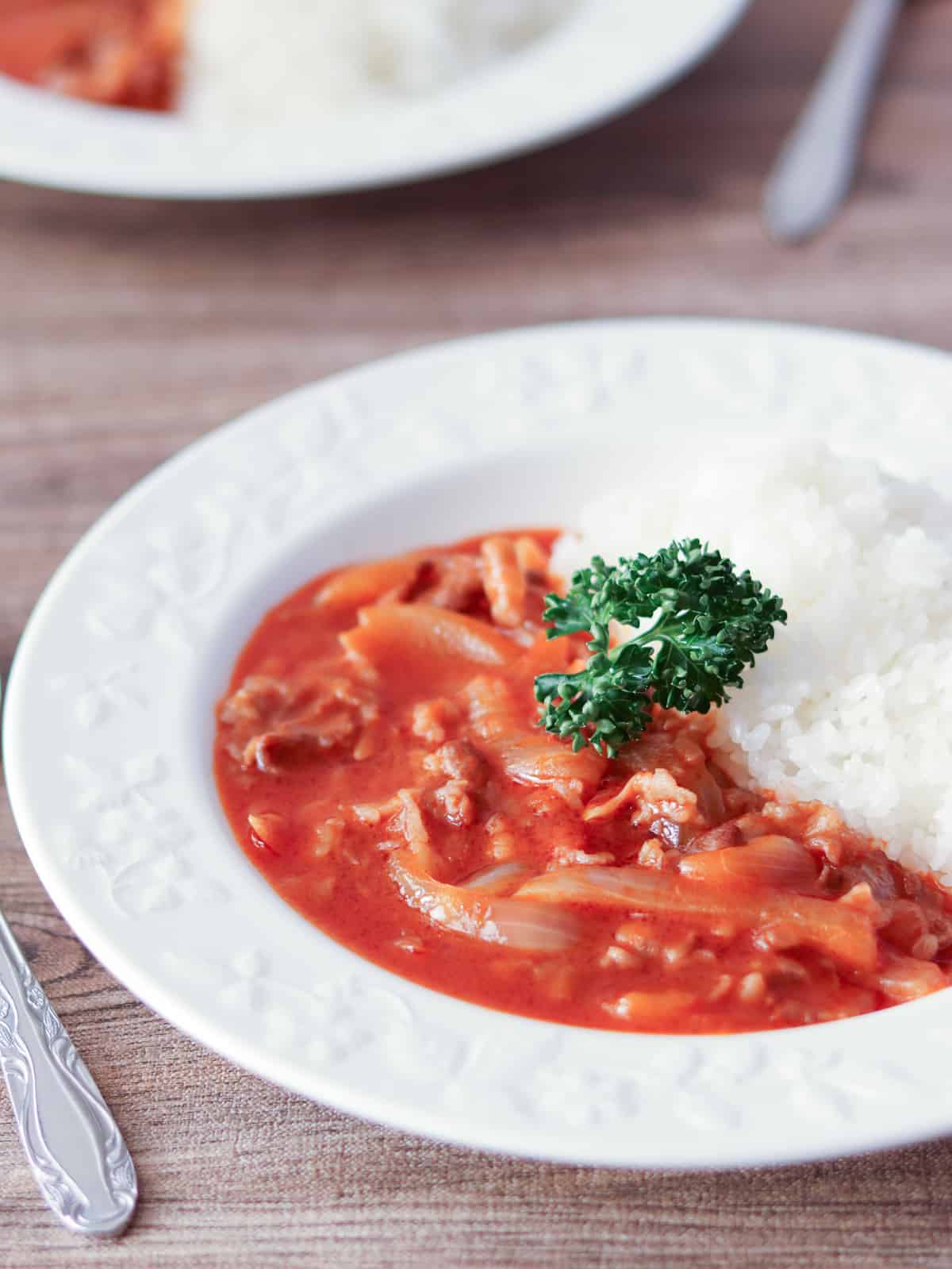
Jump to:
What is Hayashi Rice?
Hayashi Rice is a dish consisting of beef, onions, and other ingredients simmered in a tomato-based or demi-glace sauce and served over rice. It is a fusion of Japanese and Western cooking methods, offering a different perspective on Japanese cuisine. The flavor can vary depending on the choice of sauce, but regardless of the variation, it is still considered hayashi rice.
Japanese households often make this dish using a commercial roux, but it can easily be made from scratch without it. Here, I'm sharing a recipe with a tomato-based sauce, without using store-bought roux. The flavors of the beef and vegetables infuse the sauce, and the moderate acidity of the tomato sauce stimulates the appetite, making it a delightful dish.
Origin of the name
What does 'hayashi' mean in 'hayashi rice'? Actually, its meaning is not entirely clear. There are various theories about the origin of the name, including the following:
- It was invented by a man named Mr. Hayashi.
- A regular customer at a restaurant, Mr. Hayashi, frequently ordered this dish as a special request.
- It is an abbreviation of 'hashed beef with rice,' a dish that once existed in the UK.
Whichever theory is true, the term 'hayashi' in this dish is just a noun with no specific meaning on its own. Therefore, even for Japanese people, just hearing the word 'hayashi' wouldn't immediately make them think of hayashi rice. In the term 'hayashi rice,' it takes on a specific meaning.
Differences from hashed beef
This dish is also known as "Hashed Beef." In other words, hayashi rice and hashed beef are essentially the same dish, with no significant difference between them by definition.
However, in Japan, hashed beef is generally recognized as having a demi-glace sauce flavor, while hayashi rice is associated with a tomato-based sauce. For this reason, I also make a distinction between the two on my site.
Typical components
When it comes to ingredients for hayashi rice, beef and onions are essential, and mushrooms such as shimeji, maitake, and white button are sometimes included. While you can add other vegetables like carrots and potatoes, they are not very common. Therefore, even if you want to put your own twist on the dish, I recommend starting with the ingredients listed in the recipe.

📋Step-by-step recipe
Ingredients
- 17 oz cooked Japanese white rice
- 7 oz thinly sliced beef
- 7 oz onions
- 0.35 oz salted butter
- 2 Tbsp all-purpose flour (plain flour)
- 1 cup water
- 1 tsp soy sauce
- 3 parsley leaves (optional)
Seasonings:
- ⅕ cup red wine
- ⅚ cup unsalted tomato juice
- 1 Tbsp Japanese Worcestershire sauce (such as Kagome or Bull-Dog brand)
- ½ tsp salt
Instructions
🕒 Total: 45 mins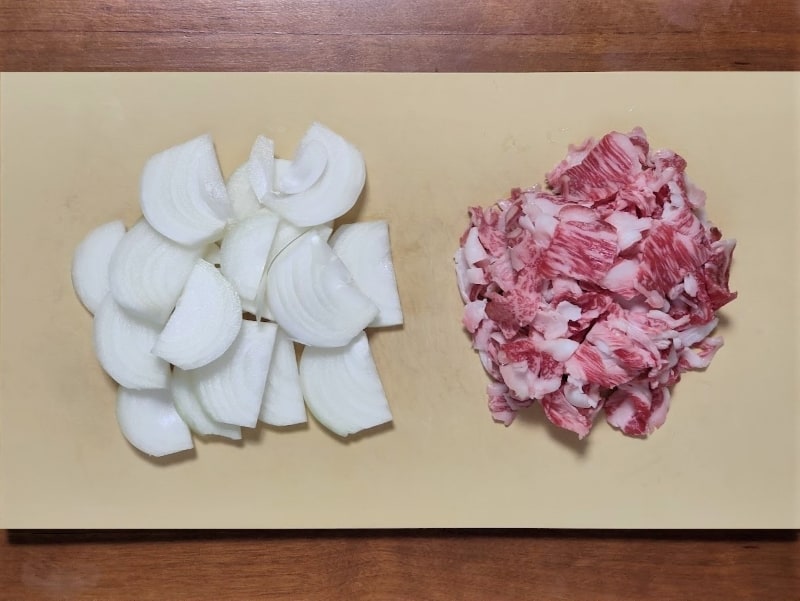
Step 1
Cut beef into 2-inch (5 cm) wide strips. Slice onions into ⅖-inch (1 cm) pieces.
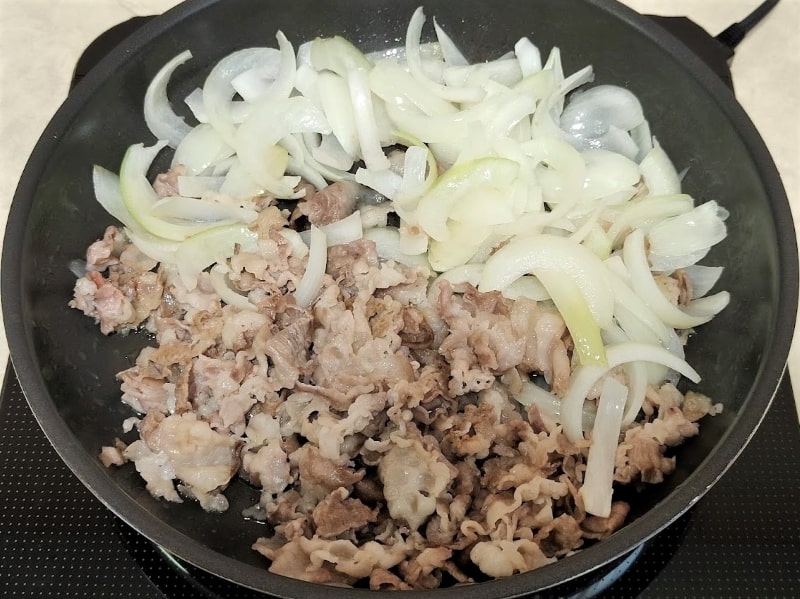
Step 2
Put butter in a pan and heat it over medium heat. Once the butter has melted, add the beef and onions, and sauté until the beef changes color and the onions become translucent.
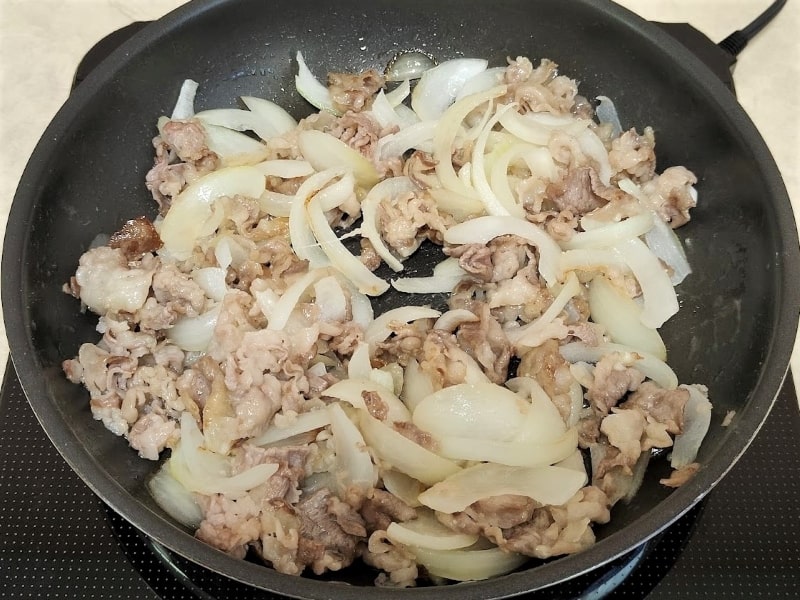
Step 3
Add flour to the pan and cook for about 30 seconds, until it is no longer powdery.
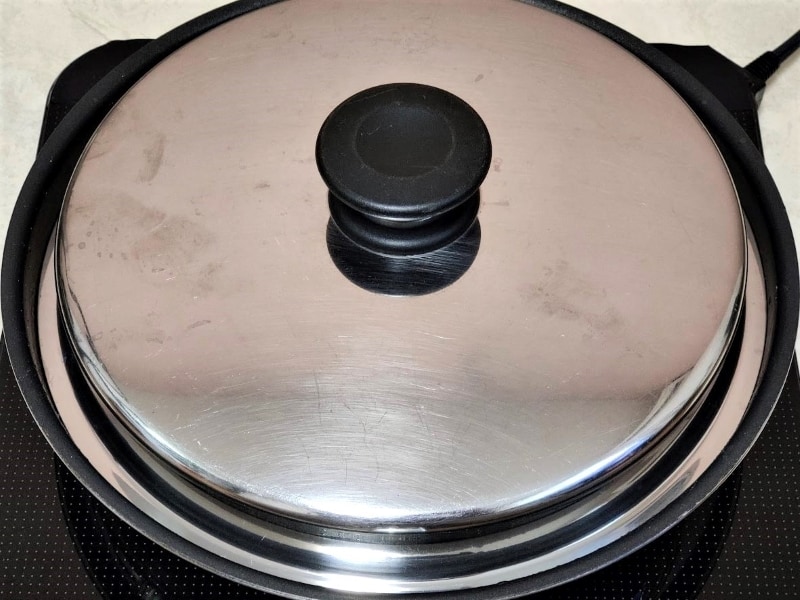
Step 4
Add water and seasonings (red wine, tomato juice, Japanese Worcestershire sauce, and salt) to the pan, and bring the mixture to a boil. Once boiling, cover the pan and let it simmer over low heat for 30 minutes.
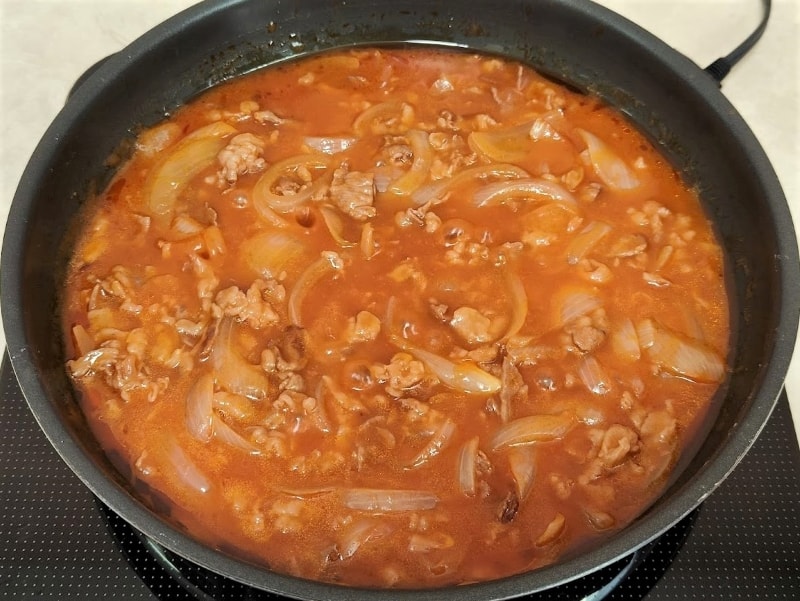
Step 5
Remove the lid, then add soy sauce to the pan and continue simmering for an additional minute.
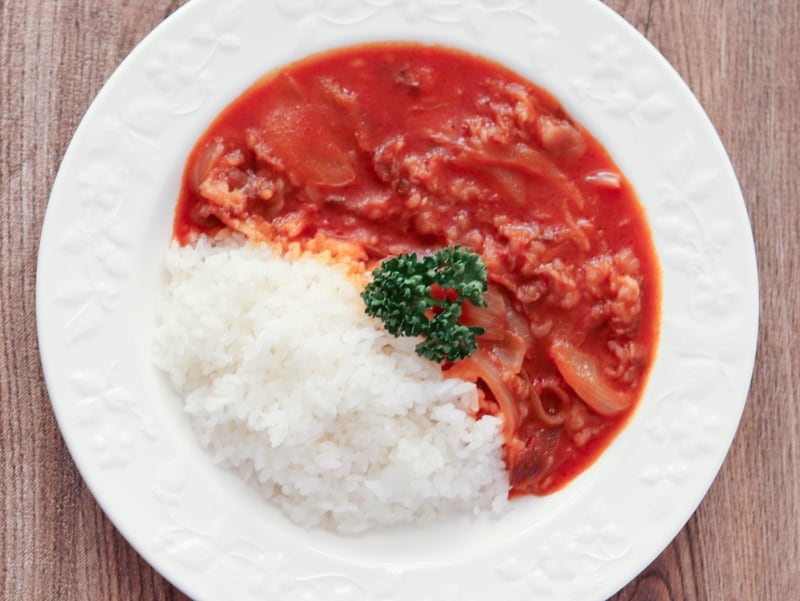
Step 6
Serve rice on one side of each plate and pour the sauce from the pan over the other side. Garnish with parsley leaves for color (optional).
To store
You can store it in the refrigerator for up to 3 days.
Tips on how to make
- Soy sauce should be added at the end of the cooking process. Adding it last preserves its flavor.
If you try this recipe, I’d love to hear what you think. Please consider leaving a review and star rating in the comments below. If you enjoyed it, I’d really appreciate it if you shared it with your friends.
Recipe card
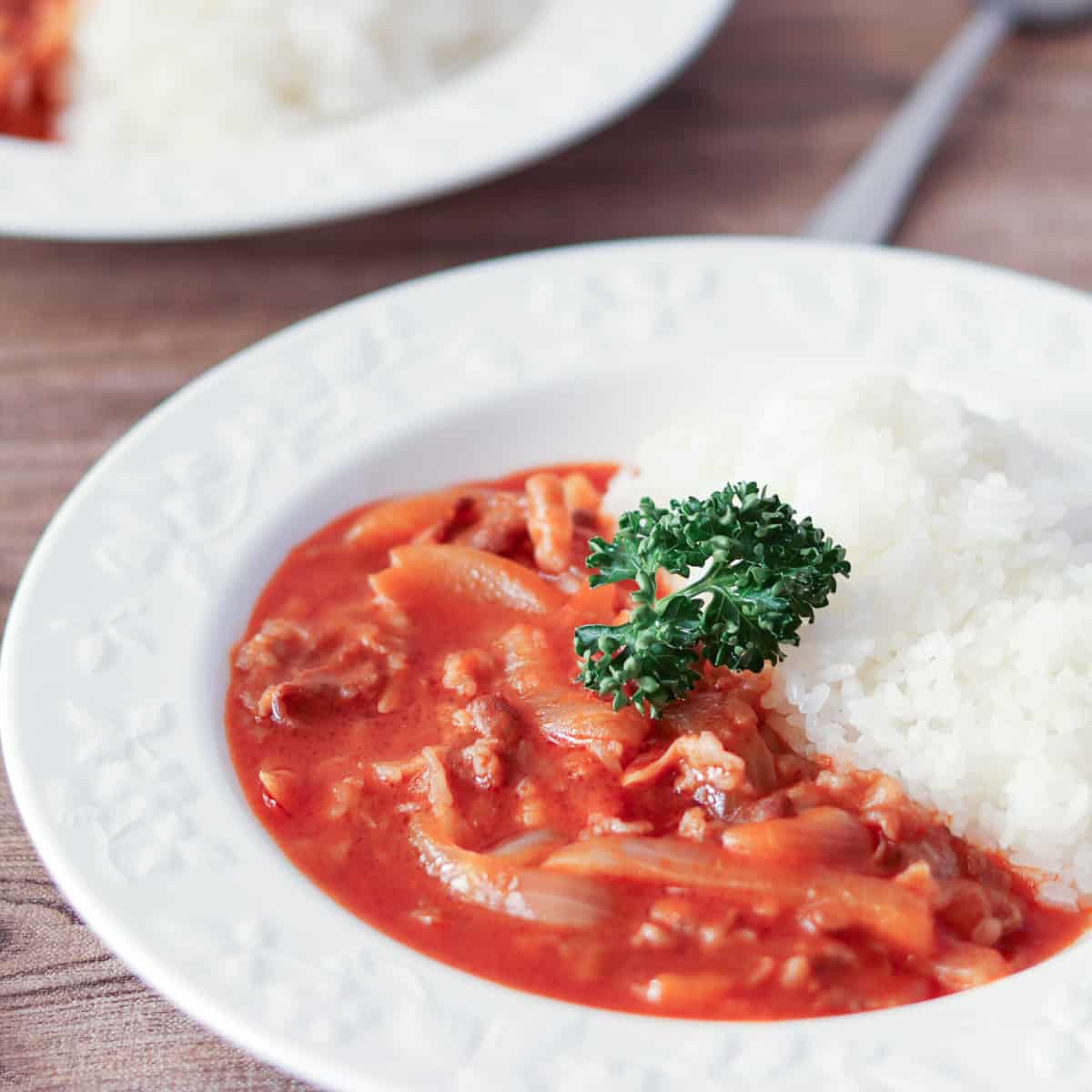
Hayashi Rice (Japanese Hashed Beef with Rice)
Ingredients
- 17 oz cooked Japanese white rice
- 7 oz thinly sliced beef
- 7 oz onions
- 0.35 oz salted butter
- 2 Tbsp all-purpose flour (plain flour)
- 1 cup water
- 1 tsp soy sauce
- 3 parsley leaves (optional)
Seasonings:
- ⅕ cup red wine
- ⅚ cup unsalted tomato juice
- 1 Tbsp Japanese Worcestershire sauce (such as Kagome or Bull-Dog brand)
- ½ tsp salt
Instructions
- Cut beef into 2-inch (5 cm) wide strips. Slice onions into ⅖-inch (1 cm) pieces.
- Put butter in a pan and heat it over medium heat. Once the butter has melted, add the beef and onions, and sauté until the beef changes color and the onions become translucent.
- Add flour to the pan and cook for about 30 seconds, until it is no longer powdery.
- Add water and seasonings (red wine, tomato juice, Japanese Worcestershire sauce, and salt) to the pan, and bring the mixture to a boil. Once boiling, cover the pan and let it simmer over low heat for 30 minutes.
- Remove the lid, then add soy sauce to the pan and continue simmering for an additional minute.
- Serve rice on one side of each plate and pour the sauce from the pan over the other side. Garnish with parsley leaves for color (optional).
Notes
- You can store it in the refrigerator for up to 3 days.

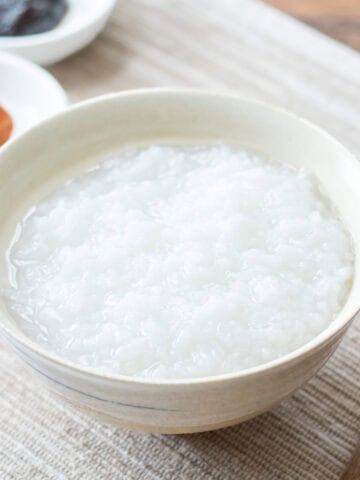
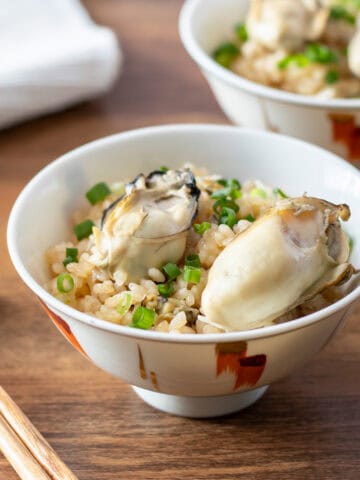

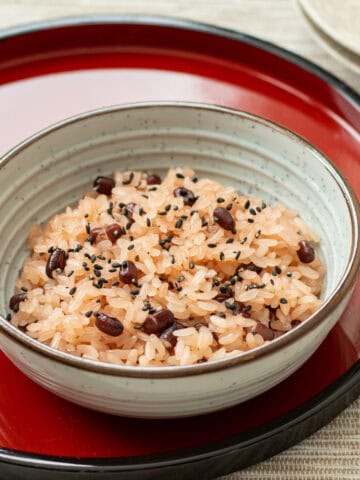
Leave a Rating and a Comment